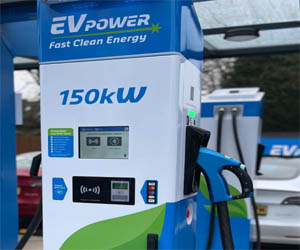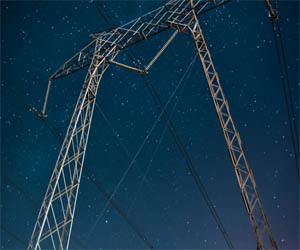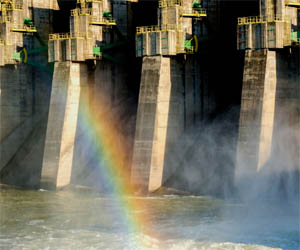


Exploring Self-Hypnosis Techniques

Hypnosis, a state of focused attention and heightened suggestibility, has long been used as a therapeutic tool to address various issues such as stress, anxiety, and phobias. While traditional hypnotherapy involves a trained hypnotist guiding an individual into a trance-like state, self-hypnosis puts the power of this transformative technique directly into one's own hands. In this article, we delve into the world of self-hypnosis techniques and how individuals can harness this skill to bring about positive change in their lives.
Self-hypnosis, also known as autohypnosis, empowers individuals to enter a hypnotic state on their own, without the assistance of a hypnotist. It can be a valuable tool for relaxation, personal growth, and addressing specific challenges. Here are some key self-hypnosis techniques to consider:
Find A Quiet Space: Begin by selecting a quiet, comfortable space where you can relax without distractions. Whether it's a cozy chair, a soft carpet, or even your bed, the key is to ensure you won't be interrupted during your self-hypnosis session.
Set An Intention: Determine the purpose of your self-hypnosis session. What specific issue or goal would you like to address or achieve? Having a clear intention will guide your self-hypnosis process.
Relaxation And Breathing: Sit or lie down in a comfortable position. Close your eyes and take a few deep, cleansing breaths. With each exhalation, release tension and stress. Slow, deep breathing can help induce a state of relaxation.
Visualization: Begin to visualize a calming and serene place. This could be a beach, a forest, or any location where you feel at peace. Imagine the sights, sounds, and sensations of this place. Visualization helps deepen your relaxation.
Progressive Muscle Relaxation: Progressively tense and then release the tension in each muscle group in your body, starting from your toes and moving upward. This can enhance your state of physical relaxation.
Affirmations And Suggestions: With your mind in a receptive state, use positive affirmations and suggestions related to your intention. For example, if you're seeking stress relief, you might say, "I am calm and in control." Repeat these affirmations while maintaining focus on your intention.
Counting Down: Some individuals find it helpful to count down from a specific number, such as 10 to 1, as they enter a deeper state of relaxation. This counting can serve as a trigger for your subconscious mind.
Deepening The State: As you continue with your self-hypnosis, you may find that you enter a deeper, trance-like state. Trust in this process, and allow your mind to relax further.
Exit And Awakening: When you're ready to conclude your self-hypnosis session, simply count upward from 1 to 5, telling yourself that you will awaken feeling refreshed and alert. Open your eyes and take a moment to reorient yourself to your surroundings.
It's important to note that self-hypnosis may require practice to become proficient. Consistency and patience are key. Additionally, self-hypnosis is most effective when you have a clear intention and believe in the power of your suggestions.
In conclusion, self-hypnosis techniques provide a valuable means of harnessing the power of the mind to bring about positive change. Whether you seek relaxation, stress relief, or personal growth, self-hypnosis can be a self-empowering tool to help you achieve your goals. As you explore and practice these techniques, you'll find that the ability to enter a hypnotic state and influence your subconscious mind becomes more accessible, ultimately enhancing your well-being and personal development.


The Power Of Renewable Energy Investment
 Economic Benefits Of Renewable Energy Investment:
Economic Benefits Of Renewable Energy Investment:
Job Creation: One of the most significant economic benefits of renewable energy investment is job creation. The renewable energy sector is labor-intensive, from manufacturing solar panels to maintaining wind turbines. As this sector expands, it generates employment opportunities in both rural and urban areas.
Stable Returns: Renewable energy projects often provide stable, long-term returns. Solar and wind farms, for instance, have predictable energy generation patterns, making them attractive investments with consistent revenue streams.
Energy Cost Savings: For businesses and homeowners, investing in renewable energy can lead to substantial savings on energy bills. Solar panels, for example, allow individuals to generate their own electricity and potentially sell excess power back to the grid.
Environmental Advantages:
The environmental advantages of renewable energy investment are equally compelling:
Reduced Carbon Emissions: By replacing fossil fuels with clean energy sources, renewable energy investments contribute to a significant reduction in greenhouse gas emissions. This is a crucial step in mitigating climate change.






Understanding Our Feline Friends
 Self-Sufficiency At Its Finest
Self-Sufficiency At Its Finest
Cats are renowned for their self-sufficiency. Unlike some pets that require constant attention and care, cats are content to spend time alone. They are skilled hunters, and their instincts drive them to find food and take care of their basic needs without human intervention. This independence is deeply ingrained in their DNA.
Solo Explorers
Cats are natural explorers. They possess a sense of adventure that drives them to investigate their surroundings. Whether they're navigating the garden, chasing a shadow, or scaling a bookshelf, cats are always on a quest to satisfy their curiosity. Their solitary explorations are not a sign of detachment but rather a reflection of their innate inquisitiveness.
Selective Socializing
While cats may appear solitary, they are not necessarily antisocial. They are selective in their social interactions. Cats will form strong bonds with their human companions and other pets if given the opportunity. The independence of cats is often misunderstood as aloofness, but in reality, they enjoy companionship on their terms.
Maintaining Dignity
Cats are known for their dignified demeanor. They prefer to maintain their composure and rarely seek attention in the same way that dogs might. This does not mean they don't enjoy affection; it simply means they prefer it on their own terms. A cat that nuzzles your hand or curls up in your lap is, in fact, expressing a deep level of trust and affection.
The Joy Of Solitude
Cats often find joy in solitude. They appreciate their own company and value moments of peace and quiet. Providing your cat with a comfortable and safe space where they can retreat when they desire solitude is essential for their well-being.
 One of the key quatrains cited as evidence of Nostradamus' insight into climate change is Quatrain 75 from Century 5, which states:
One of the key quatrains cited as evidence of Nostradamus' insight into climate change is Quatrain 75 from Century 5, which states:
"The reign will be very old by lunar years
In the year of the great seventh number done:
Appearing at the time of the great games of slaughter:
Not far from the age of the great millennium
When the dead will come out of their graves."
Proponents of the idea that Nostradamus predicted climate change suggest that this quatrain alludes to an era when the consequences of environmental neglect and climate-related disasters will become undeniable. They interpret the "reign very old by lunar years" as a reference to the long duration of human existence and the environmental damage caused over time. The "great seventh number" could signify a climactic shift or a significant change in the planet's equilibrium due to human actions.
In Quatrain 17 from Century 1, Nostradamus wrote:
"For forty years the rainbow will not be seen.
For forty years it will be seen every day.
The dry earth will grow more parched,
And there will be great floods when it is seen."
 Environmental Conservation: A smaller carbon footprint helps protect natural ecosystems, reducing habitat destruction, and preserving biodiversity. This is vital for the health of the planet's diverse flora and fauna.
Environmental Conservation: A smaller carbon footprint helps protect natural ecosystems, reducing habitat destruction, and preserving biodiversity. This is vital for the health of the planet's diverse flora and fauna.
Resource Conservation: Many of the activities that contribute to carbon footprints, such as energy consumption and waste generation, also deplete finite resources. Reducing these activities helps conserve resources like water and fossil fuels.
Key Strategies For Carbon Footprint Reduction:
Energy Efficiency: Improving energy efficiency is a fundamental step in reducing one's carbon footprint. This can be achieved through actions like using energy-efficient appliances, insulating homes, and optimizing heating and cooling systems.
Renewable Energy: Transitioning to clean, renewable energy sources like solar and wind power significantly reduces carbon emissions. Installing solar panels on homes and businesses is an increasingly accessible option.
Sustainable Transportation: Using public transportation, carpooling, biking, walking, or driving fuel-efficient or electric vehicles all contribute to reduced emissions from the transportation sector.
Waste Reduction: Minimizing waste production through recycling and composting reduces the emissions associated with waste disposal in landfills.
Low-Carbon Diet: Adopting a diet that includes more plant-based foods and less meat, particularly beef, can lower the carbon footprint of food consumption.
Conservation: Conserving water and reducing consumption of water-intensive products, like meat and certain crops, contributes to a smaller carbon footprint, as energy is used in the production and transport of water.
Green Consumer Choices: Choosing products with lower carbon footprints and supporting environmentally conscious businesses can help drive demand for sustainable practices.
Embracing Sustainability And Environmental Responsibility
 2. Energy Efficiency
2. Energy Efficiency
Energy efficiency is a fundamental pillar of a clean energy future. It involves the optimization of energy use across various sectors, including residential, commercial, and industrial settings. Energy-efficient technologies, improved building designs, and sustainable practices reduce energy waste, lower energy bills, and cut greenhouse gas emissions.
3. Electrification Of Transportation
Transitioning from gasoline and diesel-powered vehicles to electric vehicles (EVs) plays a pivotal role in reducing carbon emissions. EVs produce zero tailpipe emissions, significantly lowering the carbon footprint of transportation. The expansion of EV charging infrastructure and the development of advanced battery technologies are driving this transformation.
4. Energy Storage Solutions
Energy storage technologies, such as advanced batteries and grid-scale storage, enable the integration of intermittent renewable energy sources into the power grid. These solutions ensure a reliable and consistent energy supply, regardless of weather conditions or time of day.
5. Carbon Capture And Utilization
Carbon capture and utilization (CCU) technologies capture carbon dioxide emissions from industrial processes and convert them into valuable products. CCU not only reduces emissions but also contributes to the circular economy by repurposing carbon dioxide as feedstock for fuels and chemicals.
6. Sustainable Urban Planning
Sustainable urban planning promotes eco-friendly city designs that reduce energy consumption and emissions.